Mollusks
The Pacific Northwest is home to hundreds of species of shellfish and each species has it’s own unique shells that vary in size, shape, colour and texture. The shells most commonly found in BC belong to four classes of mollusks: bivalves (class Bivalvia), gastropods (class Gastropoda), tuskshells (class Scaphopoda) and chitons (class Polyplacaphora). There are many things that make a mollusk a mollusk, characterized shared by most mollusks include an unsegmented body, a shell (internal or external), a toothed tongue called a radula, a mantel (a fold in the body to line the shell), a muscular foot and a fluid-filled cavity called a coelom. Mollusks are among the most abundant and interesting aquatic phyla.
The Nature house has a large collection of shells that’s only getting bigger so check back to see what else we find!
Bivalves
Bivalves have a two-part hinged shell that protects the soft-bodied invertebrate. Early bivalves ingest sediment for food; however more advanced species have modified gills called ctenidia which they use to filter water and collect food particles. Since bivalves live a primarily sedentary life they have lost both the head and the radula typical of other mollusks.
Bivalves are found in both fresh and marine ecosystems and there are over 12,000 described species. Common bivalves include: clams, oysters, mussels, scallops, cockles & shipworms. There are 180 bivalve species found in British Columbia, 70 of which can be found in the intertidal zone.
Two bivalves of special importance are the Pacific Oyster (Crassostera gigas) and the Olympia Oyster (Ostera lurida). The Olympia Oyster is the only native oyster found on the Pacific coast of Canada. It is currently a SARA (Species at risk act) listed species of special concern. The introductions of exotic parasites, predatory snails and crabs and the invasive Pacific oyster pose a great threat to the species. To learn more about its status check out its species profile on the Government of Canada website.
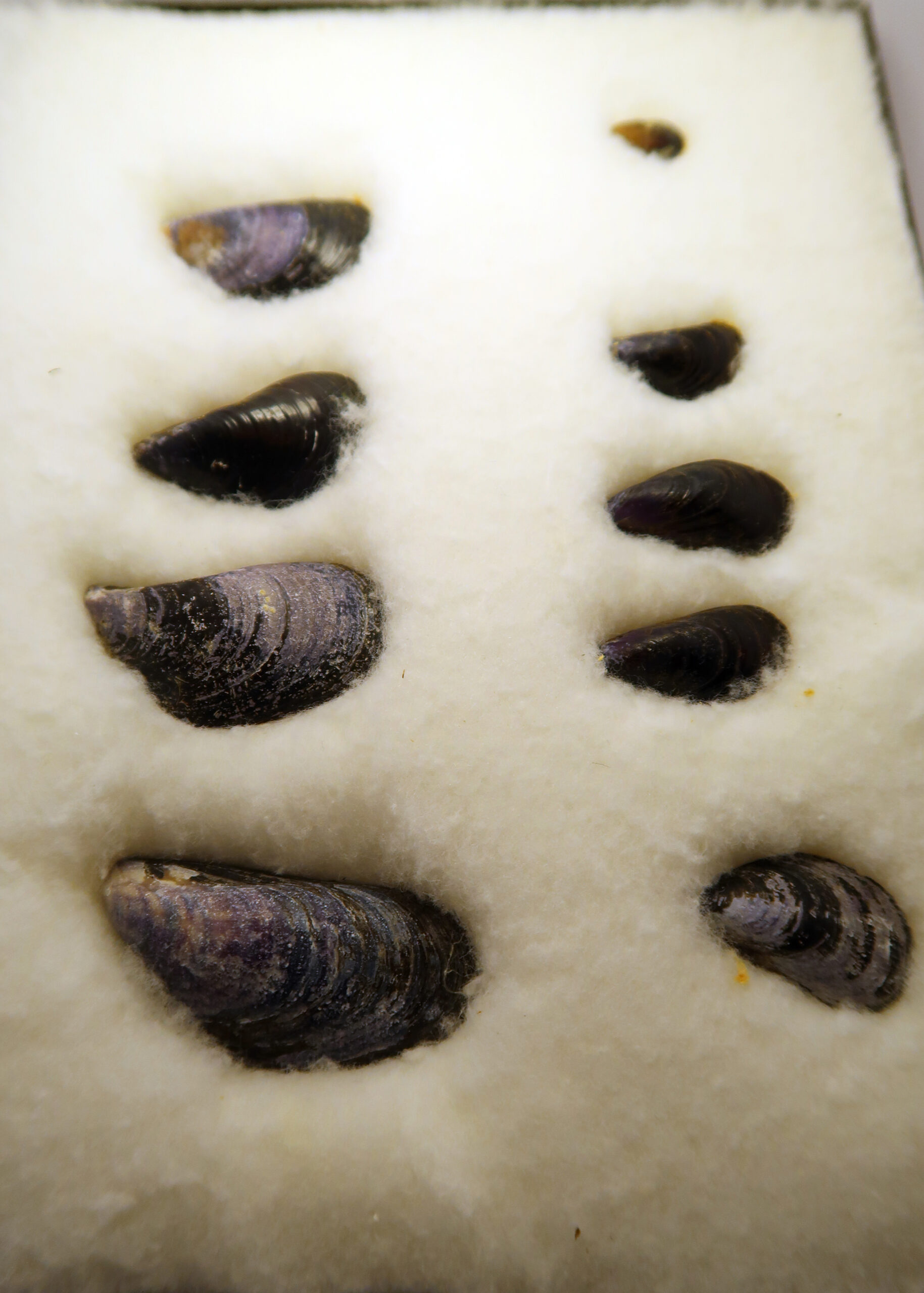
Pacific Blue Mussel shells
(Mytilus edulis)
Frequently found in quiet sheltered areas.
They are a very common and dominant intertidal species.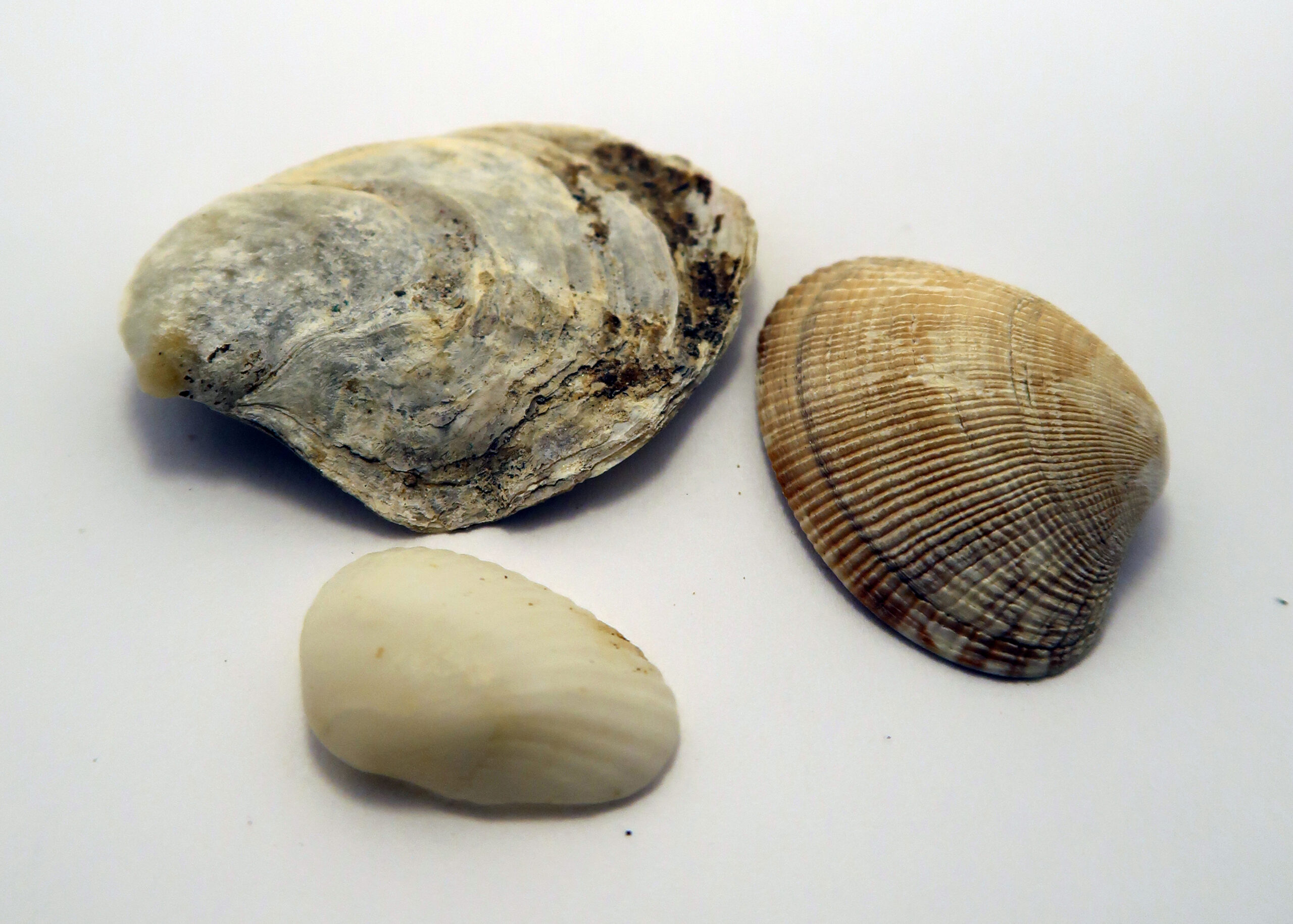
Cockles (Bottom Left & Right) (Family Cardiidae)
& Olympia Oyster (Top Left) (Ostrea conchaphila)
Both commonly found in mud flats or sandy areas.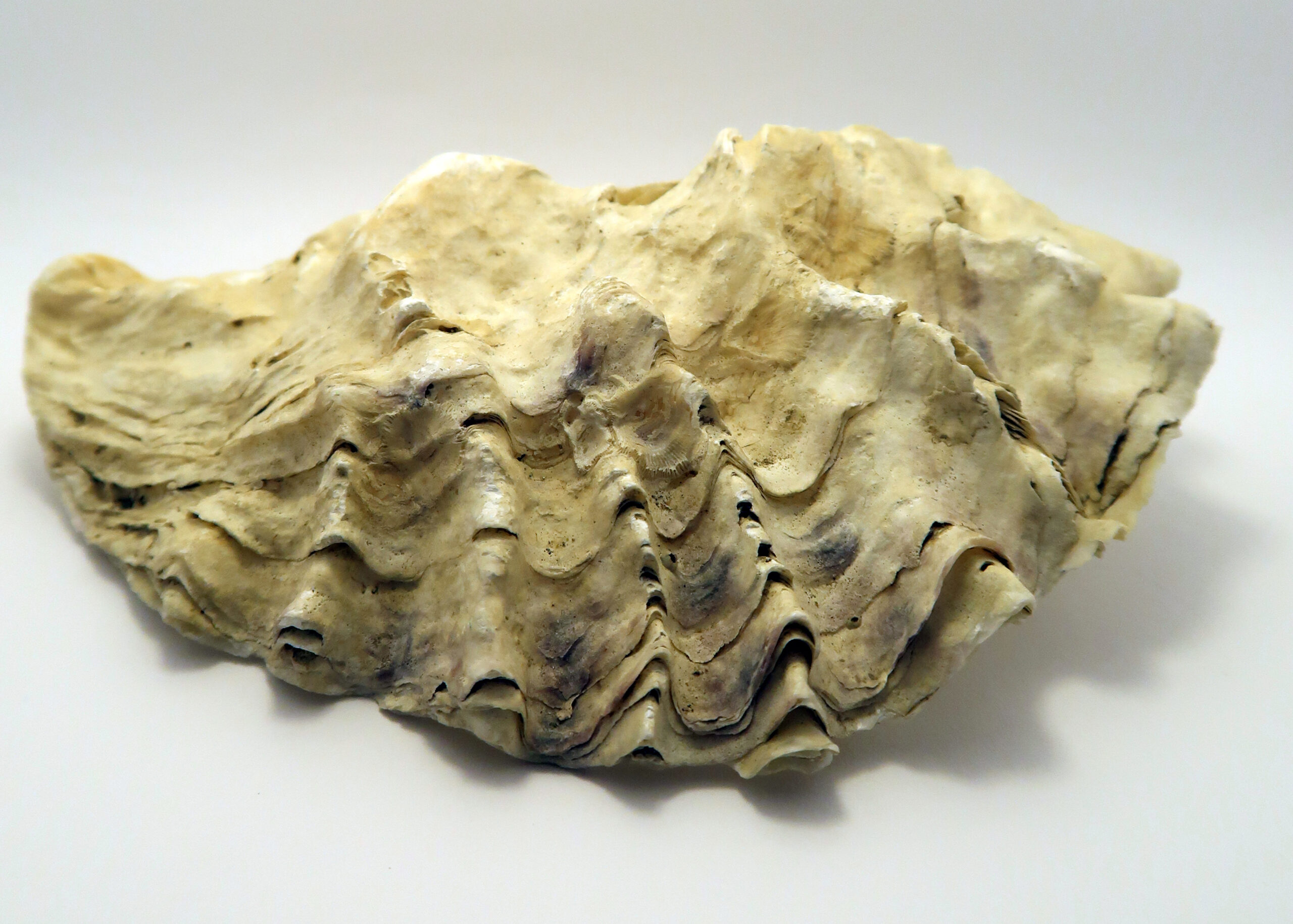
Pacific Oyster shell
(Crassostera gigas)
Found in the lower intertidal on rocky beaches.
Introduced in the 1900s from Japan.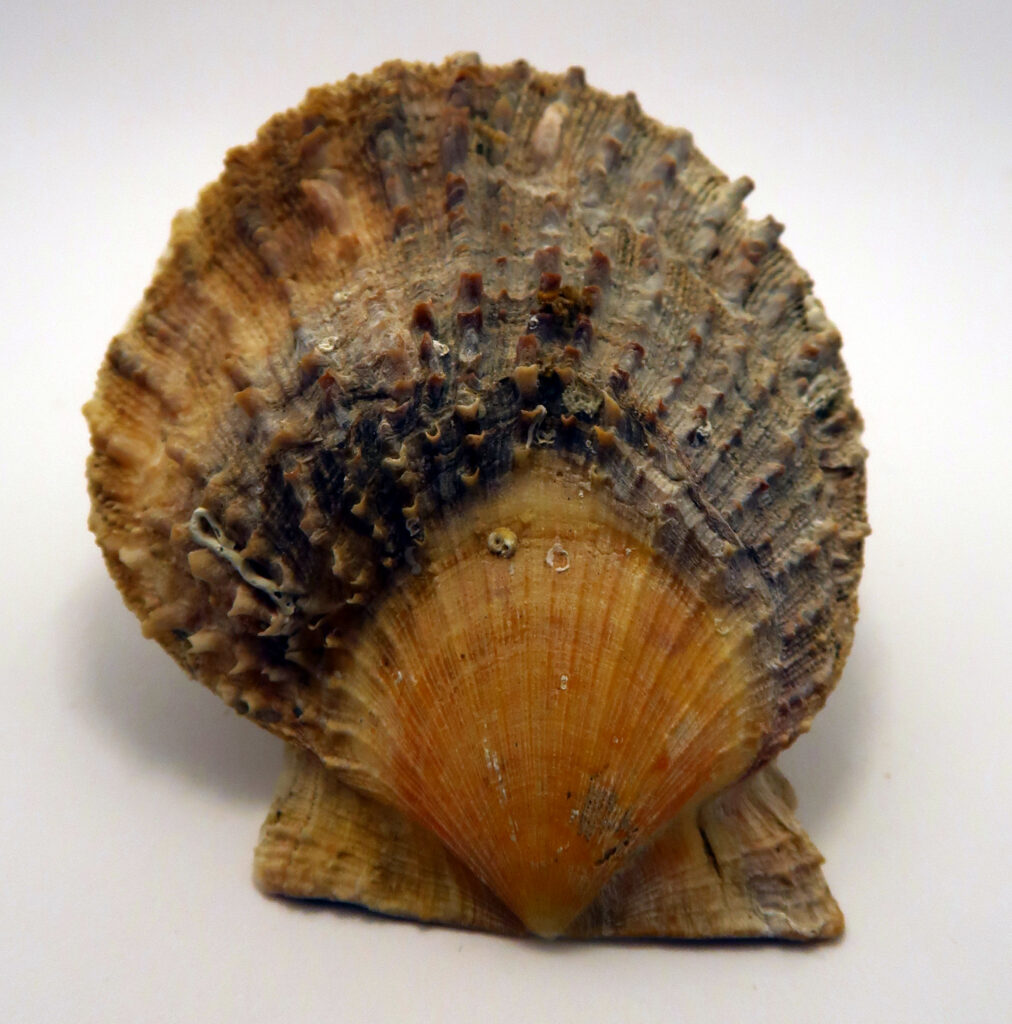
Spiny Pink Scallop Shell
(Chlamys hastata)
Commonly found on rocky reef areas and often encrusted with sponges.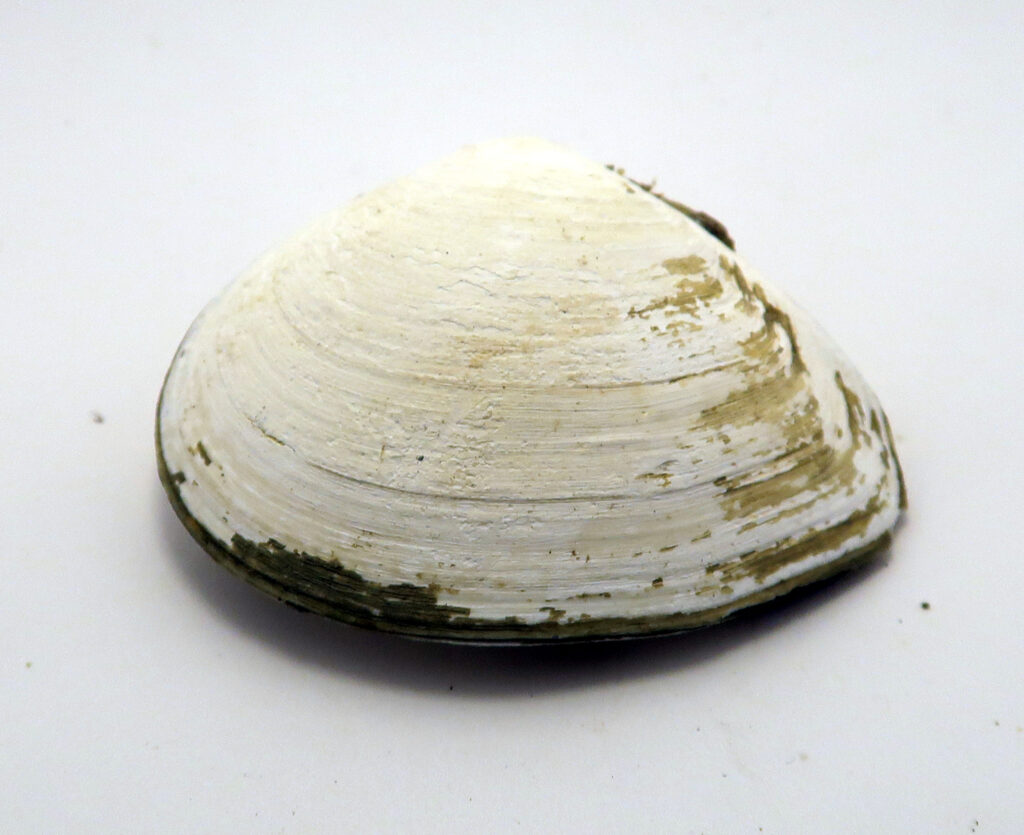
Littleneck Clam Shell
(Family Veneridae)
These clams are often found in soft sediment. They are also a commonly consumed species.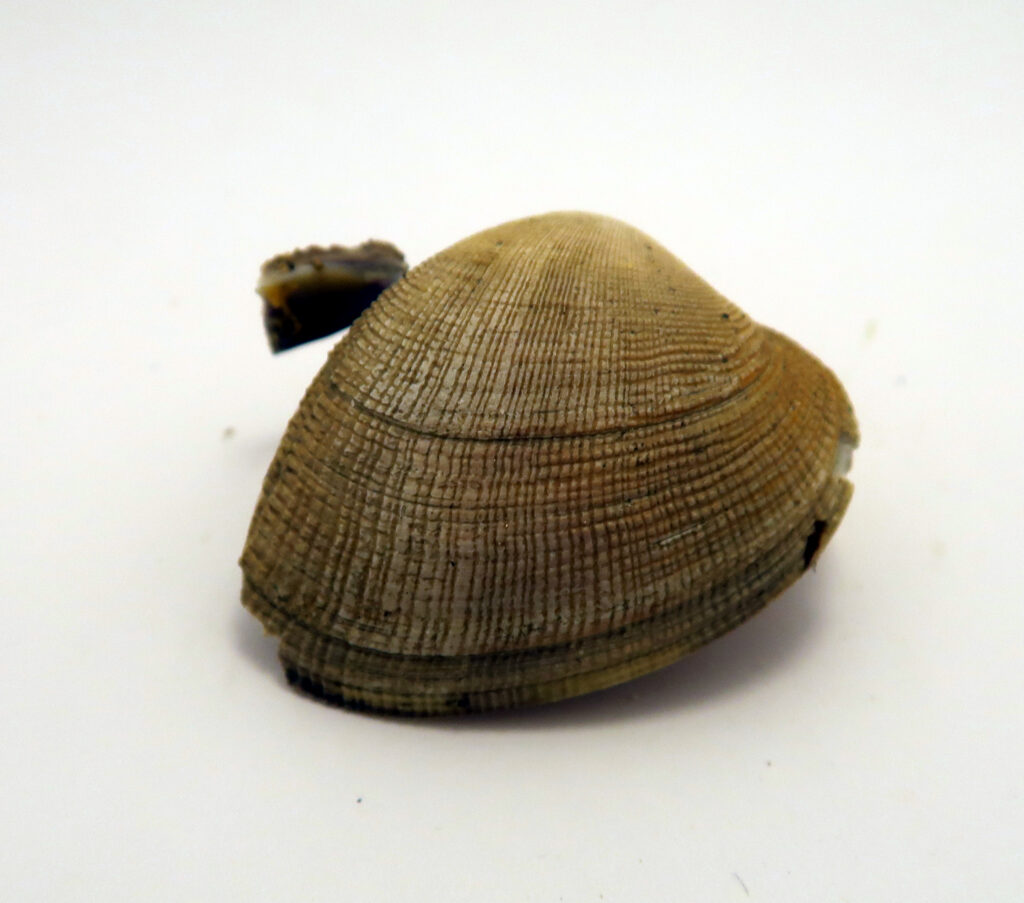
Manila Clam Shell
(Tapes philippinarum)
Found in soft sediment, and commonly consumed by humans.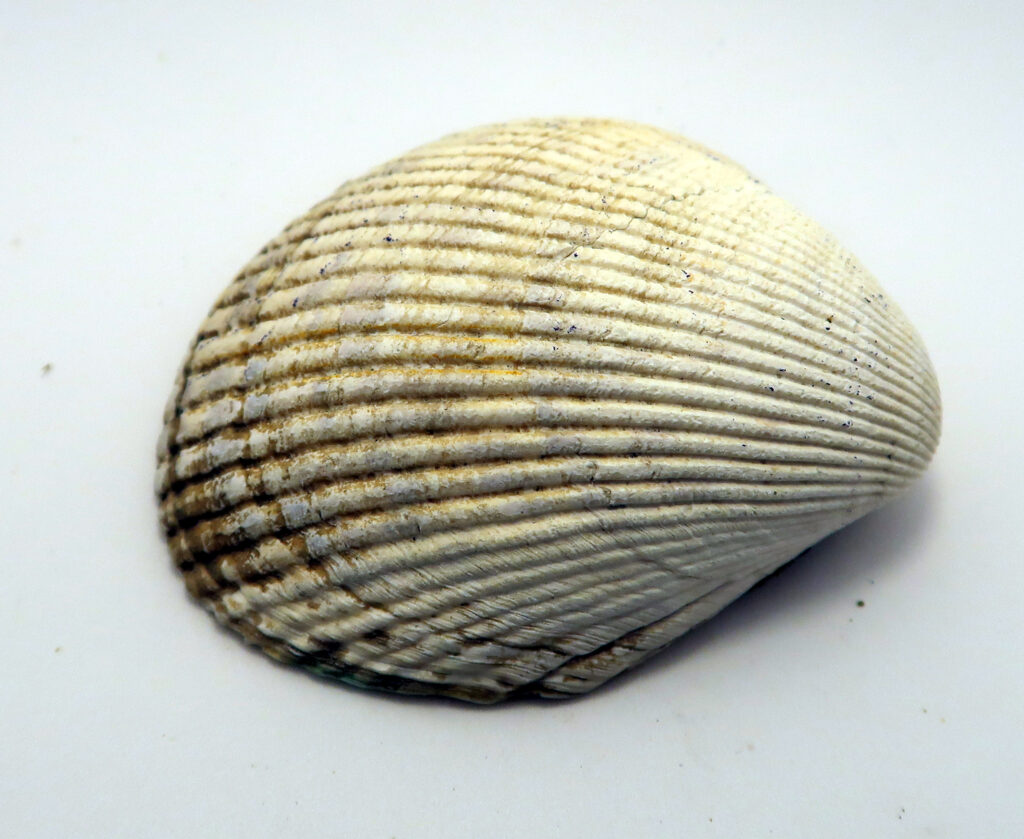
Nuttall’s Cockle Shell
(Clinocardium nuttallii)
Found in sheltered areas buried in sandy/gravel substrates.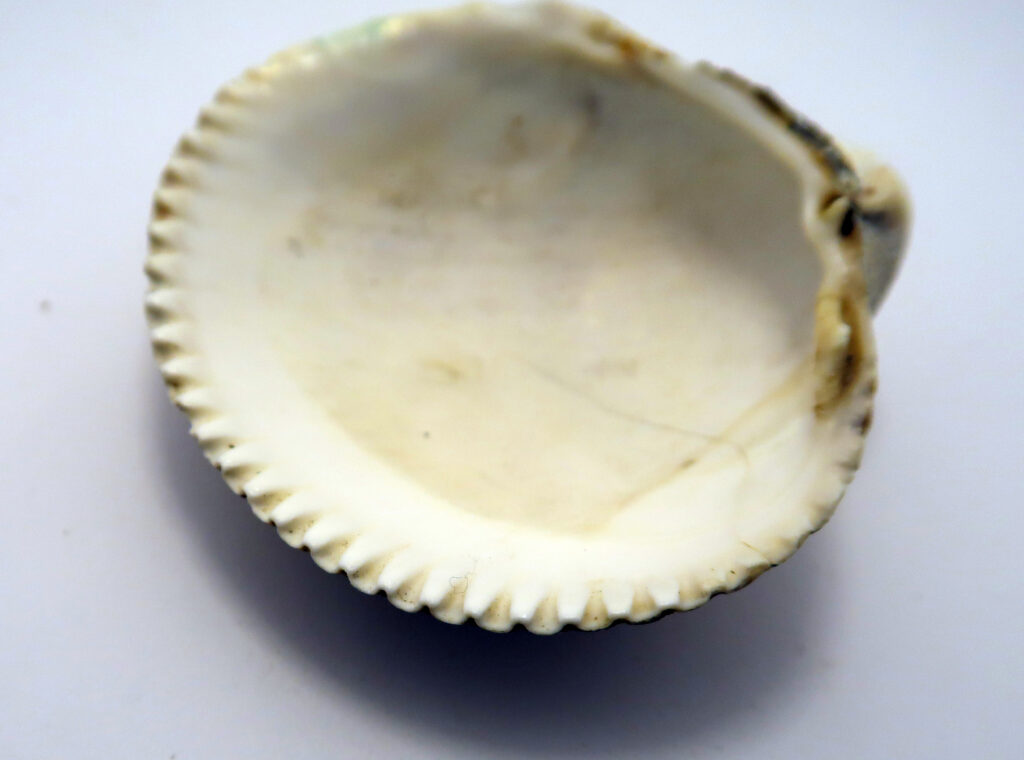
Nuttall’s Cockle Shell Underside
(Clinocardium nuttallii)
The small “teeth” along the outside help keep the Cockle firmly closed.
For more information on bivalves check out NOAA
Gastropods
Gastropods are one of the most diverse groups of animals. They are commonly known as snails and slugs. They are extremely morphologically diverse coming in different colours, sizes, body plans and shell morphologies. They also occupy the widest range of ecological niches of all the mollusks, being the only class to have species inhabiting the terrestrial environment.
Gastropods are the largest group of mollusks with over 62,000 described species. They comprise almost 80% of all living mollusks. There are approximately 7,000 species of marine gastropod in North American waters.
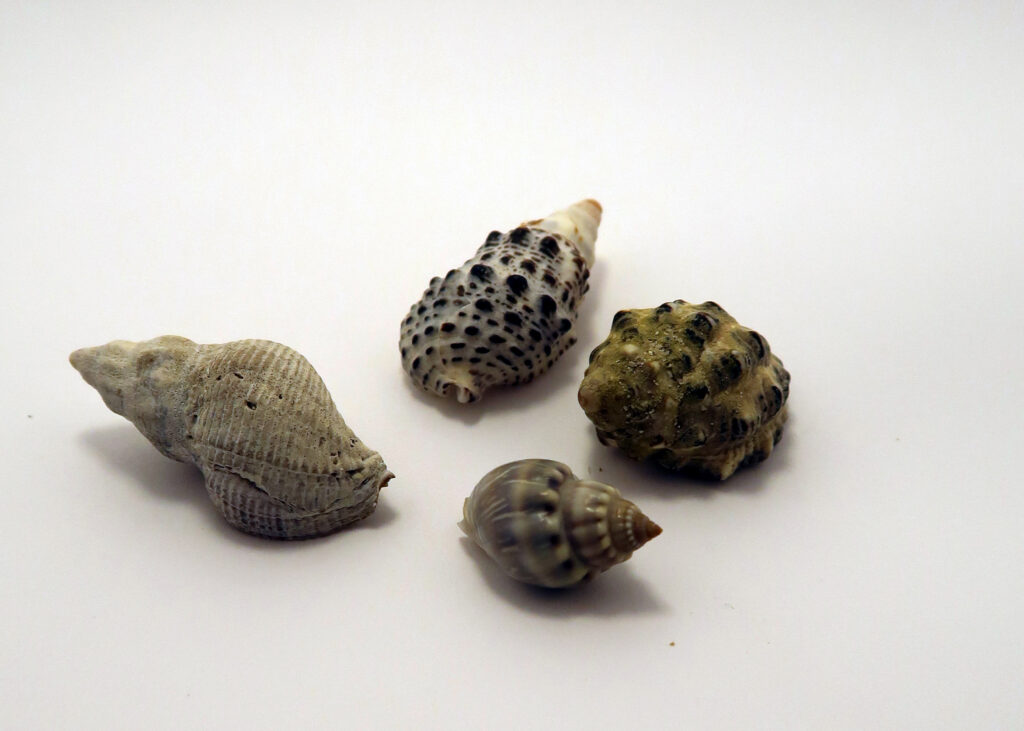
Lurid Rocksnail (Left) (Ocinebrina lurida),
Checkered Periwinkle (Bottom) (Littorina scutulata)
& Dogwinkle (Top & Right) (Family Muricidae)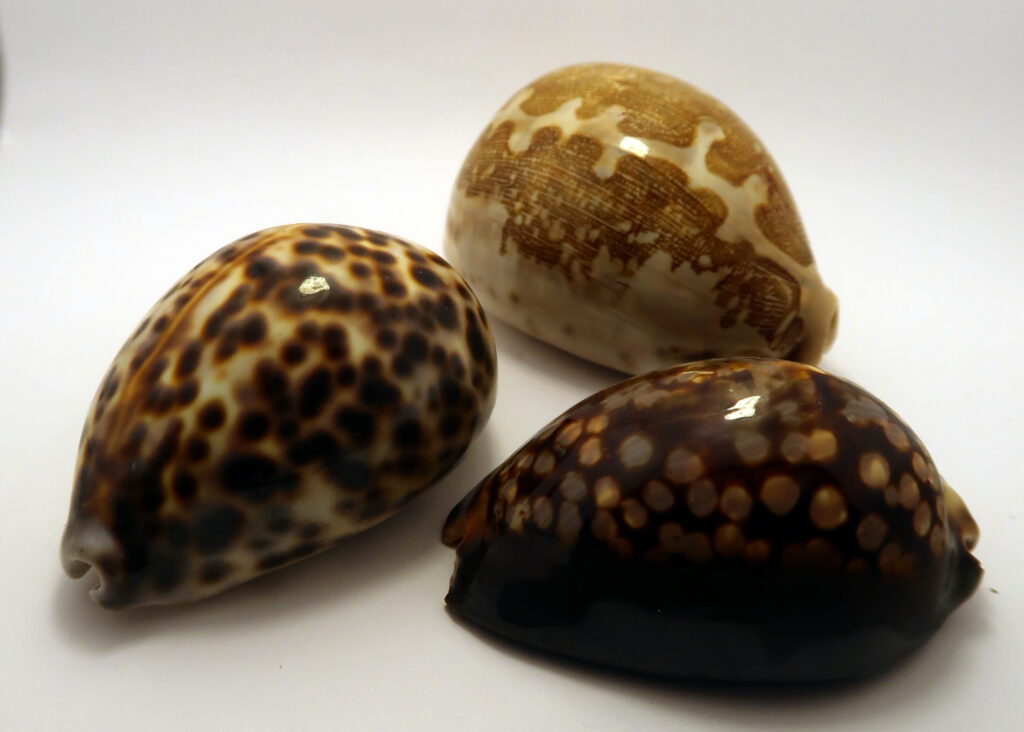
Family Cypraeidae
Snails in this family cover their shells with their mantle, causing the shiny appearance.
Family Cypraeidae
Aperture view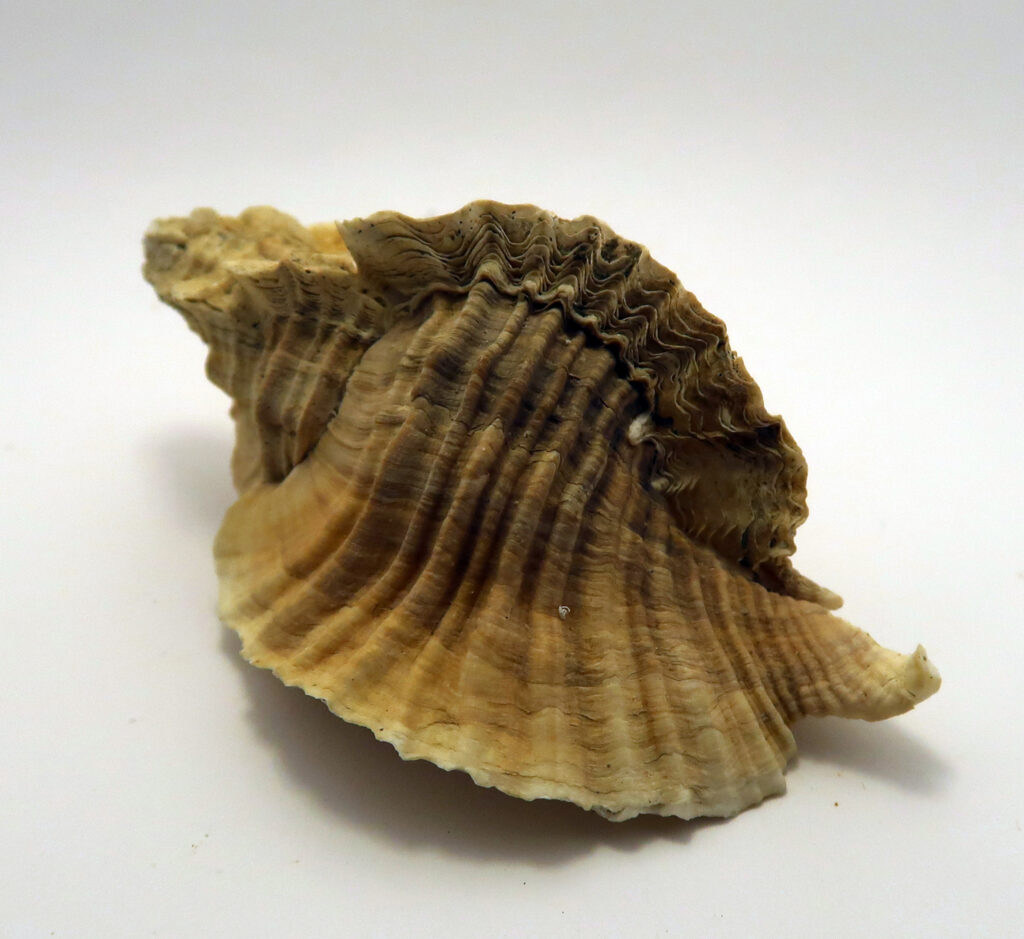
Leafy Hornmouth
(Ceratostoma foliatum)
These snails live and feed on barnacles. The three “frills” on their shell help ensure the snail land right side up if dislodged.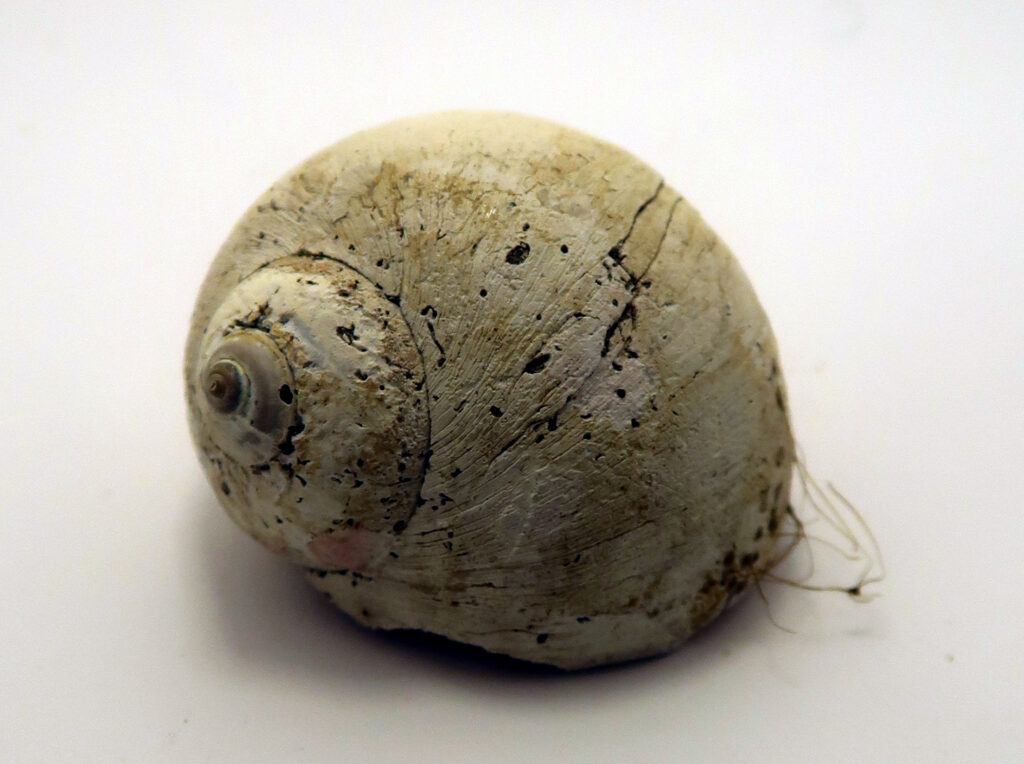
Margarite Shell
(Family Trochidae)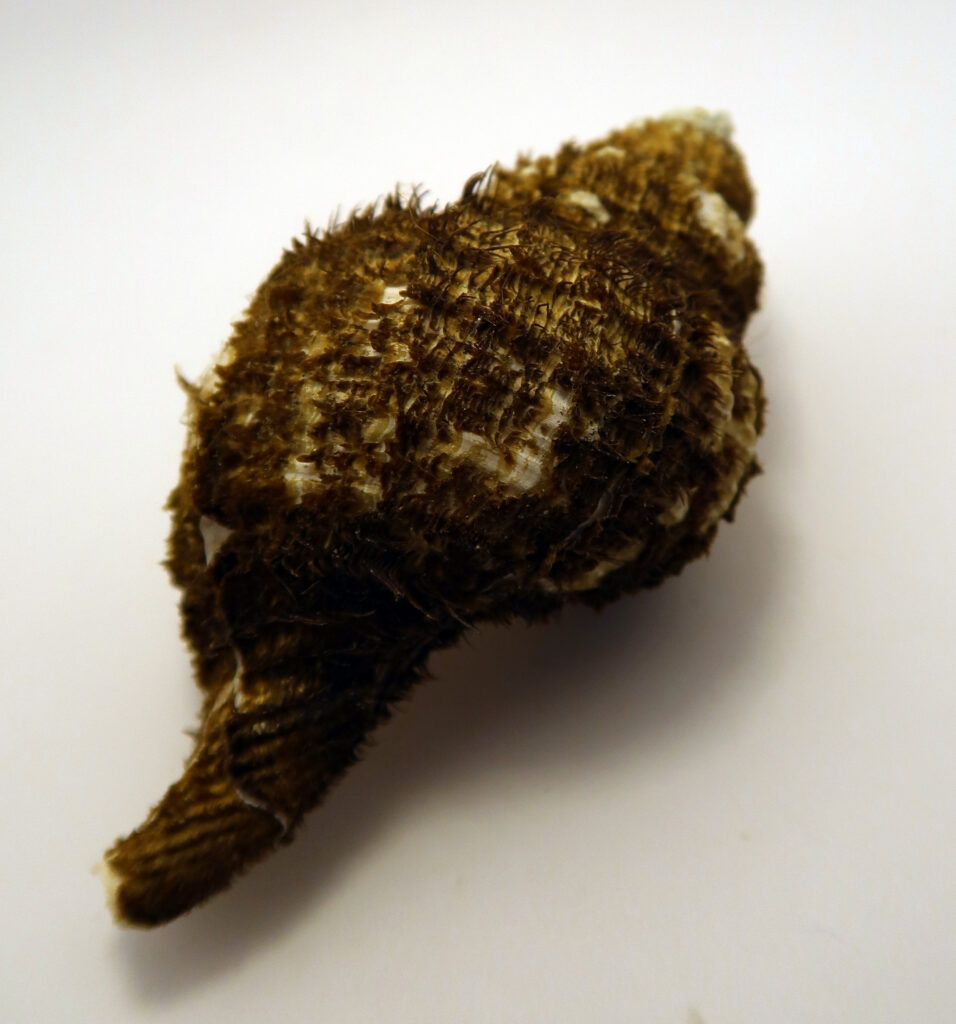
Oregon Triton shell
(Fusitriton oregonensis)
They are the largest intertidal snail, growing up to 6 in.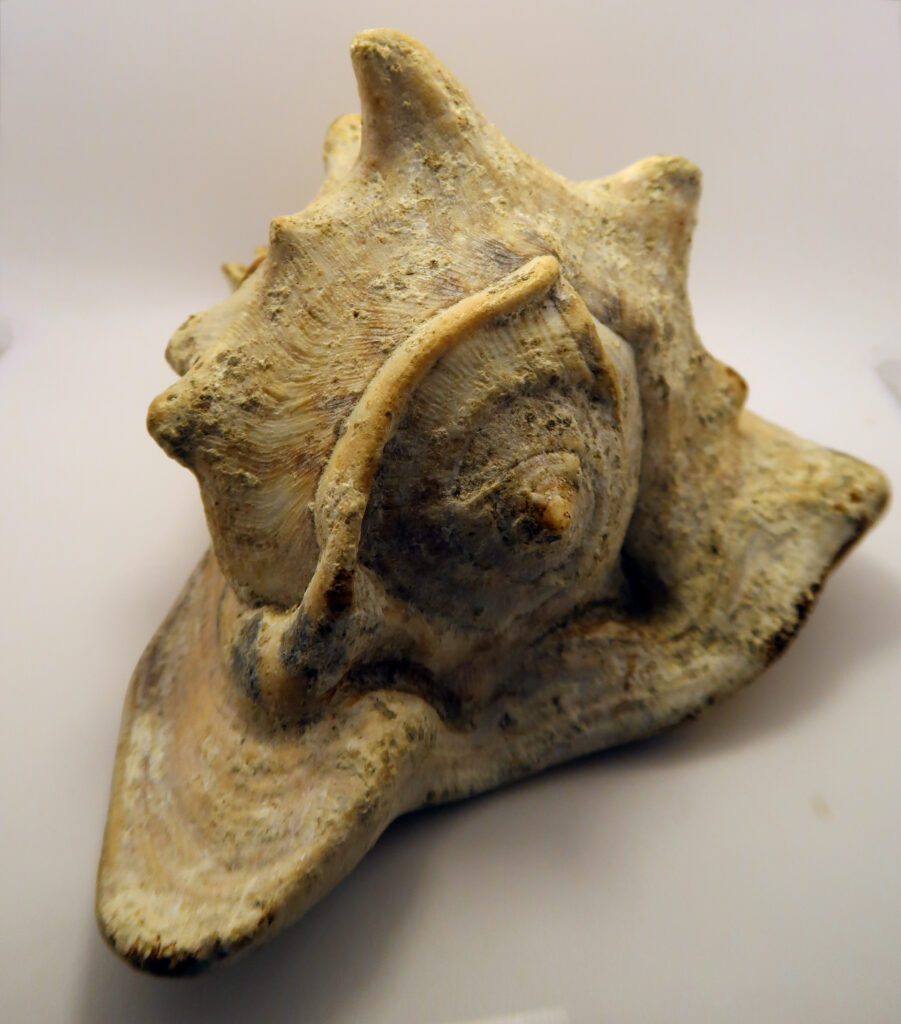
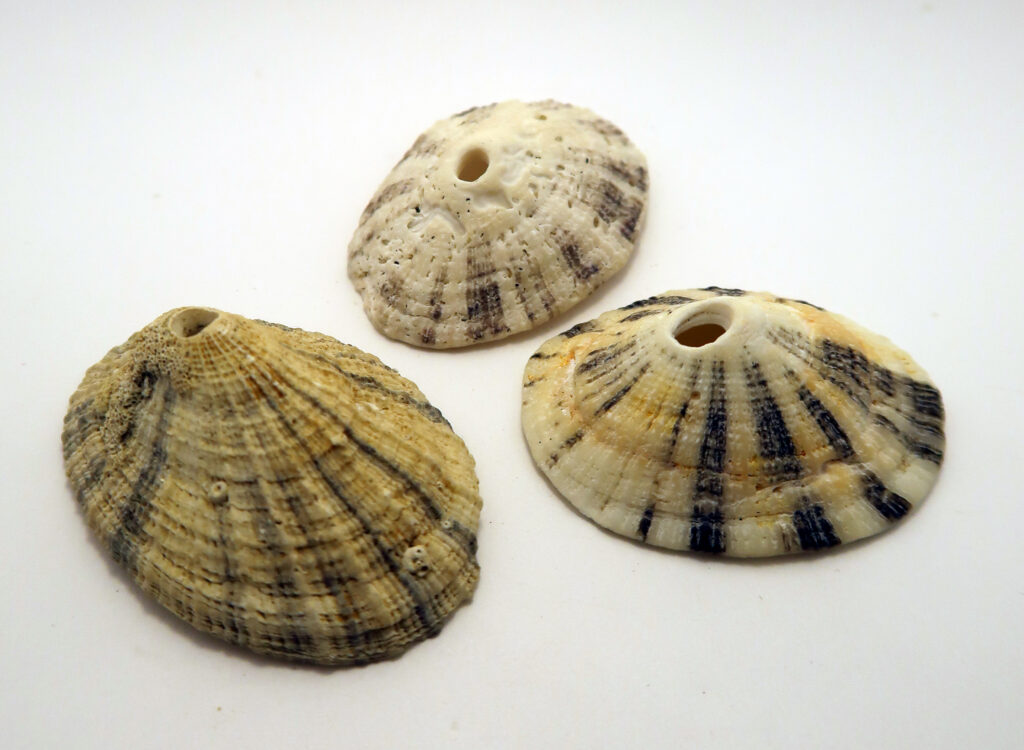
Rough Keyhole Limpet shells
(Diodora aspera)
Limpets are a common intertidal species in BC. They are characterized by the small hole present at the apex of their shell.
Various gastropod shells showing diversity in shell colour, size, shape and texture. 
Northern Abalone shell
(Haliotis kamtschatkana)
This species is the world’s northernmost abalone. Abalone is a prizes food item, and has been depleted worldwide.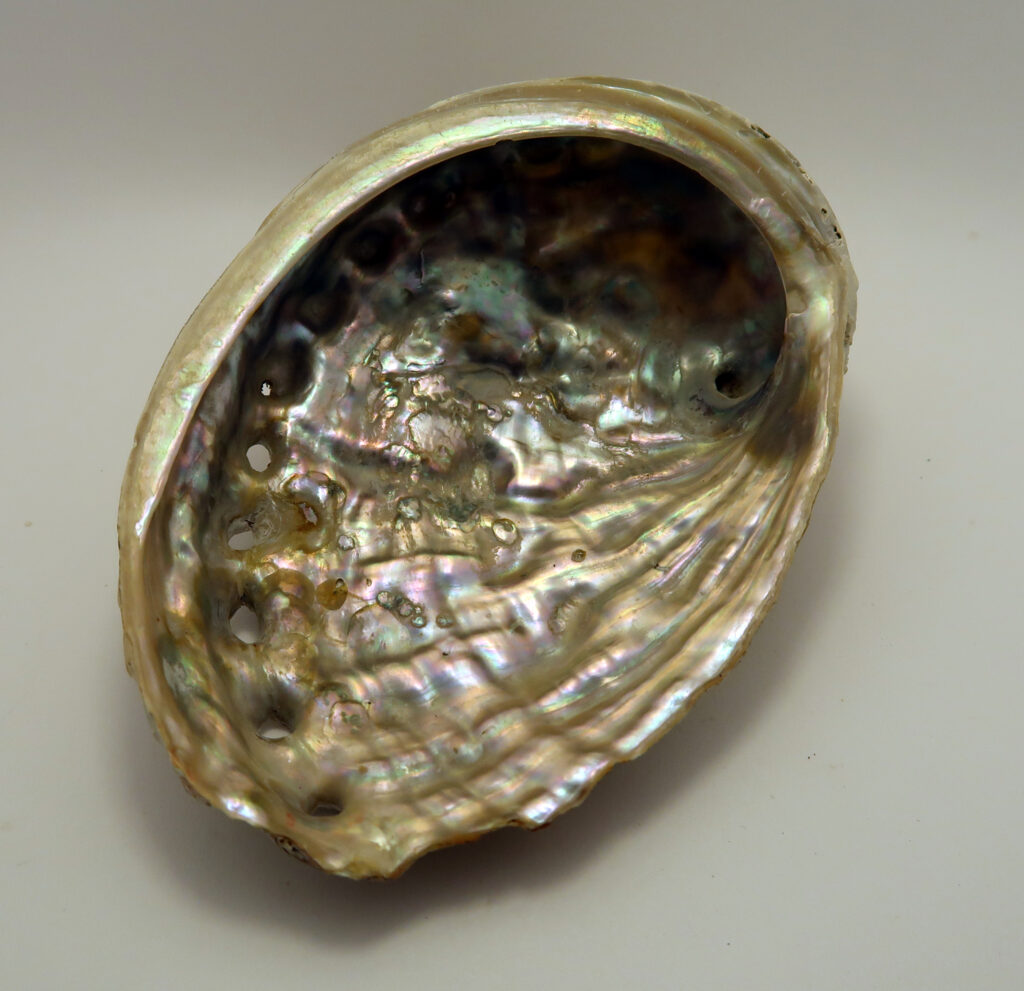
Northern Abalone shell interior
(Haliotis kamtschatkana)
The interior of an abalone shell is highly iridescent. Commonly used in jewelry it’s beautiful interior is another reason their population has been depleted.
For more information on gastropods check out the University of California
Chitons
Chitons, also known as “sea cradles” are a group of mollusks consisting of approximately 600 species. The group is defined by the eight interlocking plates which protect their backs. These plates are flexible and allow the chiton to curl into a ball for protection from predators.
Chitons are very slow moving, check out the video on our species gallery page to see one move. After a chiton dies, their plates often wash ashore and are said to resemble butterflies with their curved shape. There are approximately 20 intertidal species of chiton found in British Columbia, and over 100 subtidal species in the Pacific.
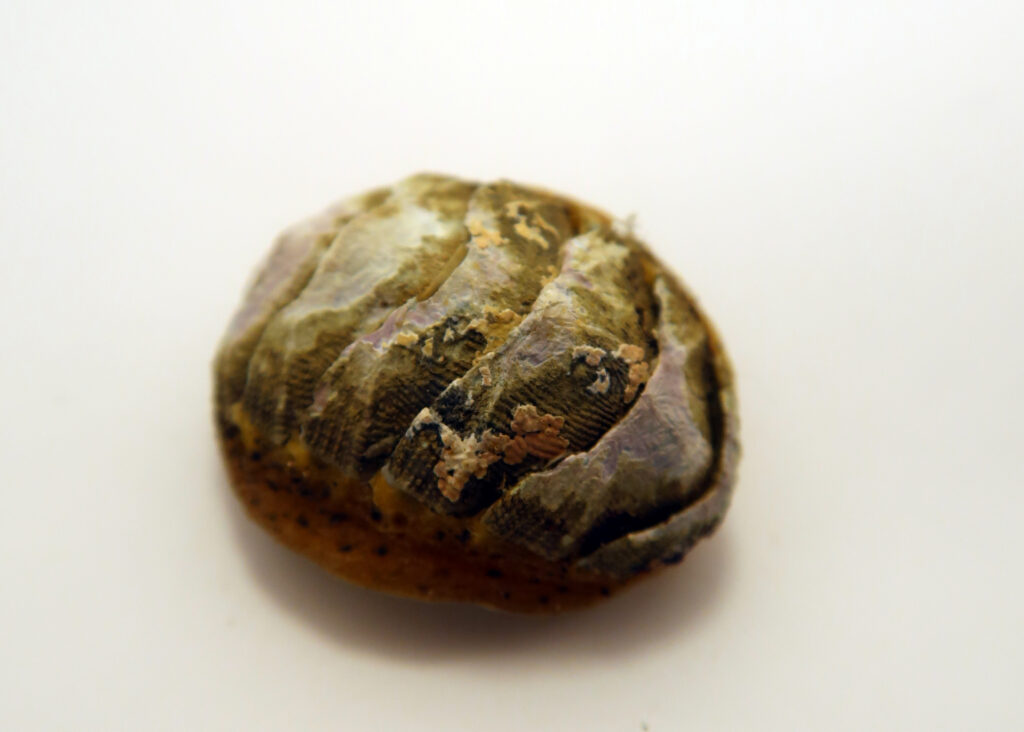
Mossy Chiton shell top
(Mopalia muscosa)
Common tidepool species in BC.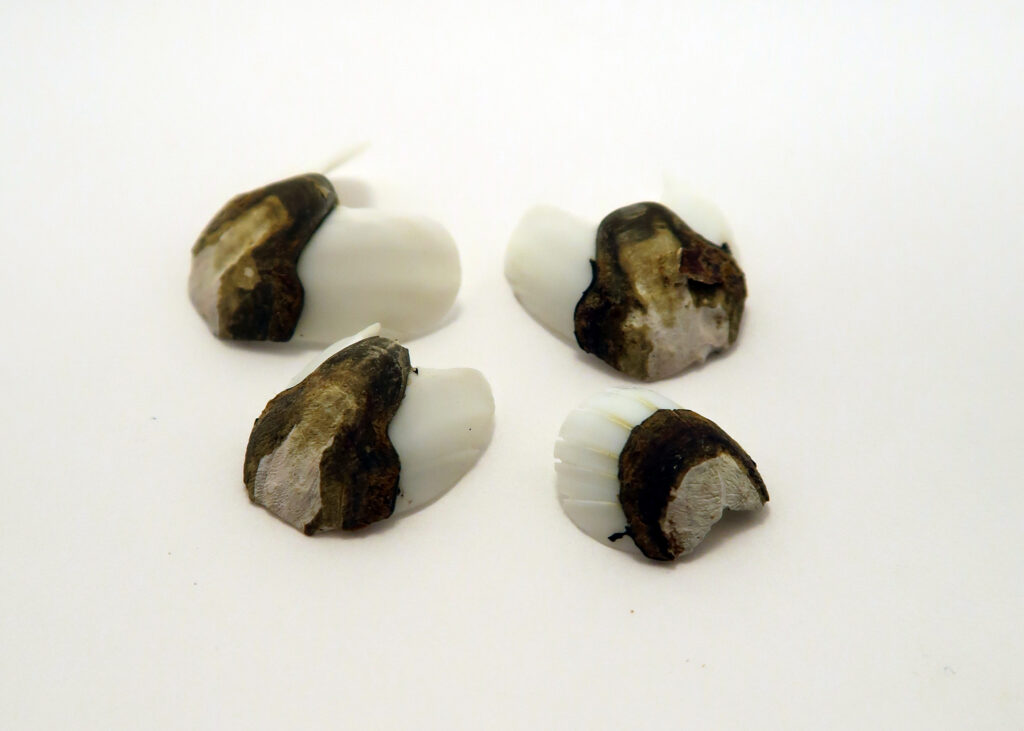
Hind’s Mopalia
(Mopaila hindsii)
Shell plates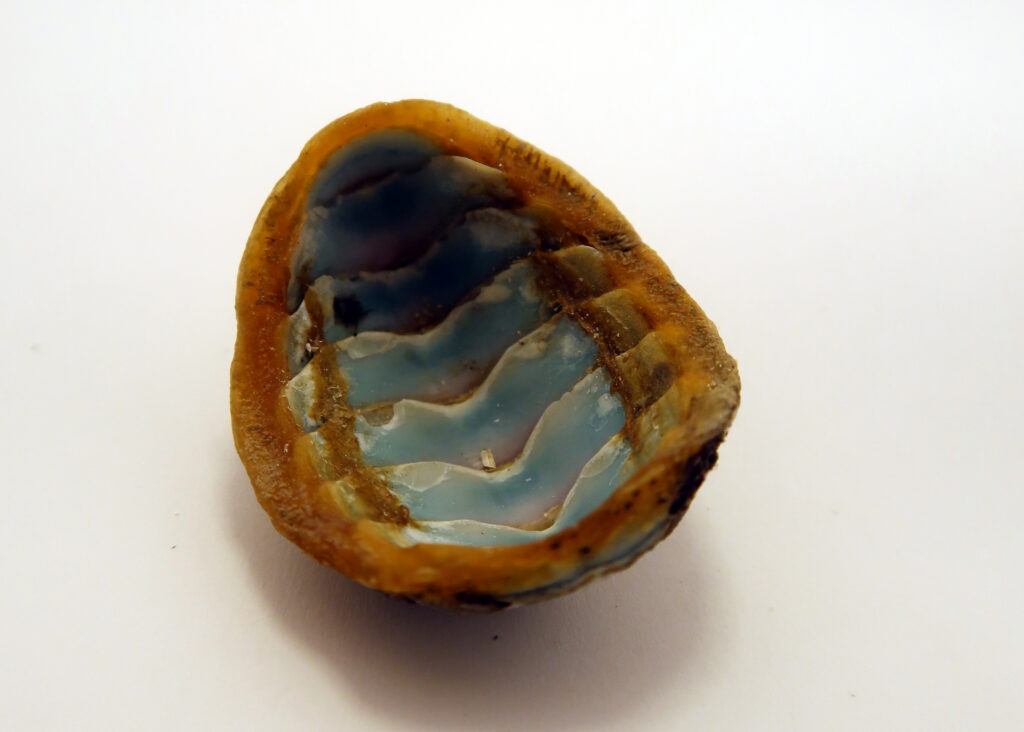
Mossy Chiton shell underside
(Mopalia muscosa)
The drab exterior of this species hides a bright blue interior.
For more information on gastropods check out Mayne Island Conservancy


